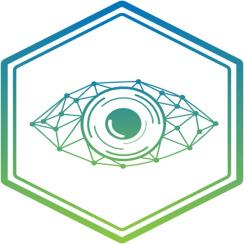MegaEye:应用多种机器学习方法识别具有眼部生物活性的口服化合物
IF 5.4
引用次数: 0
摘要
眼睛是一个复杂的器官,在视觉的光学和初始信号处理过程中起着至关重要的作用。因此,眼睛具有多种生理和动态屏障来保护眼部组织和隔室。口服药物治疗眼部疾病在临床试验中常常不能证明其疗效。一种分子到达眼部特定靶点(如前段细胞与后段细胞)的能力在很大程度上取决于其物理化学性质是否允许通过与给药途径和靶点位置相关的各种眼屏障(如角膜、巩膜、泪液稀释、血视网膜屏障、淋巴流出)。利用机器学习来预测分子的眼部生物活性尚未得到充分的探索。我们现在描述了几个数据集的管理,这些数据集是由一系列广泛的计算方法生成的,用于识别口服给药后预测到达眼睛的药物。这些数据集包括简单的分子特性(例如分子量),使用血脑屏障MPO评分,以及使用转运蛋白和其他相关文献数据集作为血视网膜屏障代理的机器学习模型。FDA批准的具有眼活动的药物被用来验证模型识别模型中没有的其他分子的能力。最后,我们使用了一个大型语言模型,根据眼睛的潜在活动对40多万种天然化合物进行了排名。总之,我们说明了机器学习模型的应用,可以扩展到未来的眼部应用,以重新定位分子。本文章由计算机程序翻译,如有差异,请以英文原文为准。

MegaEye: Applying multiple machine learning approaches to identify oral compounds with ocular bioactivity
The eye is a complex organ with the critical role of mediating the optical and initial signal processing steps of vision. As such, the eye has multiple physiological and dynamic barriers to protect ocular tissues and compartments. Oral administration of pharmacological agents to treat ocular diseases have often failed to demonstrate efficacy in clinical trials. The ability of a molecule to reach a specific target in the eye (e.g. cells in the anterior versus posterior segment) is largely determined by whether its physicochemical properties permit passage across the various ocular barriers (e.g. cornea, sclera, tear dilution, blood-retinal barrier, lymphatic outflow) that are relevant to the route of administration and the target location. The use of machine learning to predict ocular bioactivity of molecules is underexplored. We now describe the curation of several datasets, generated by a wide array of computational approaches, that are used to identify drugs predicted to reach the eye following oral delivery. These datasets included simple molecular properties (e.g. molecular weight), using the blood-brain barrier MPO score, and machine learning models as a proxy for the blood-retinal barrier using transporter and other relevant literature datasets. FDA approved drugs with reported ocular activity were used to validate the models’ ability to identify additional molecules not in the models. Finally, we used a large language model, to rank over 400,000 natural compounds by potential activity in the eye. In summary, we illustrate machine learning model applications that can be expanded for ocular applications in future to repurpose molecules.
求助全文
通过发布文献求助,成功后即可免费获取论文全文。
去求助
来源期刊

Artificial intelligence in the life sciences
Pharmacology, Biochemistry, Genetics and Molecular Biology (General), Computer Science Applications, Health Informatics, Drug Discovery, Veterinary Science and Veterinary Medicine (General)
CiteScore
5.00
自引率
0.00%
发文量
0
审稿时长
15 days
 求助内容:
求助内容: 应助结果提醒方式:
应助结果提醒方式:


